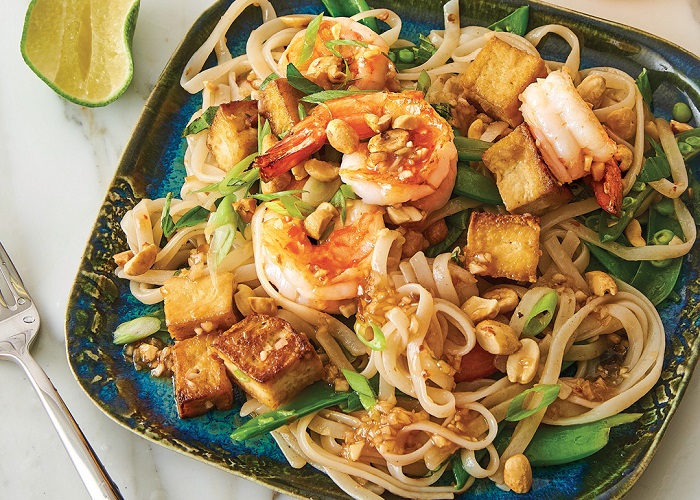Pad Thai
The Origin and Evolution of Pad Thai: A Culinary Journey
Introduction:
Pad Thai, the beloved Thai street food dish, has become an international sensation loved by people from all corners of the globe. This article takes you on a culinary journey, exploring the rich history and evolution of Pad Thai from its humble beginnings in Thailand to its status as a global favorite.
The Origins:
Pad Thai’s roots can be traced back to Thailand, where it was created during the 1930s. While its precise origins are debated, it’s widely believed to have been influenced by a combination of Thai culinary traditions and global influences.
Influences on Pad Thai:
- Chinese Noodles: The use of stir-fried noodles in Pad Thai reflects Chinese culinary influence, as Thailand’s neighboring country has a long history of noodle-based dishes.
- World War II: During World War II, Thailand faced a shortage of rice, leading the government to promote the consumption of noodles. This played a significant role in popularizing Pad Thai.
Ingredients and Preparation: Traditional Pad Thai typically includes rice noodles, eggs, tofu or shrimp, bean sprouts, peanuts, lime, and a flavorful sauce made from tamarind paste, fish sauce, sugar, and chili. These ingredients create a harmonious blend of sweet, salty, and tangy flavors.
Evolution of Pad Thai: Over the years, Pad Thai has undergone several transformations, adapting to the tastes of different regions and evolving into various versions. Some adaptations include:
- Vegetarian Pad Thai: For those seeking a meatless option, tofu or additional vegetables are used as a substitute for meat or seafood.
- Pad Thai Noodles with Protein: In Thailand, you’ll find variations that include different proteins like chicken, pork, or squid.
- Global Fusion: In the West, chefs and home cooks have put their own twist on Pad Thai by incorporating local ingredients and preferences.
Pad Thai’s Global Appeal: The ease of preparation, delightful flavors, and adaptable nature of Pad Thai have made it a favorite worldwide. It’s not just a street food staple in Thailand but also a popular dish in Thai restaurants globally.
Conclusion: Pad Thai’s journey from its Thai origins to its status as an internationally beloved dish is a testament to its deliciousness and adaptability. Whether you enjoy the traditional recipe or a fusion version, Pad Thai continues to captivate taste buds and bring the flavors of Thailand to tables around the world. It’s a dish that beautifully represents the global love for Thai cuisine and the cultural connections created through food.

